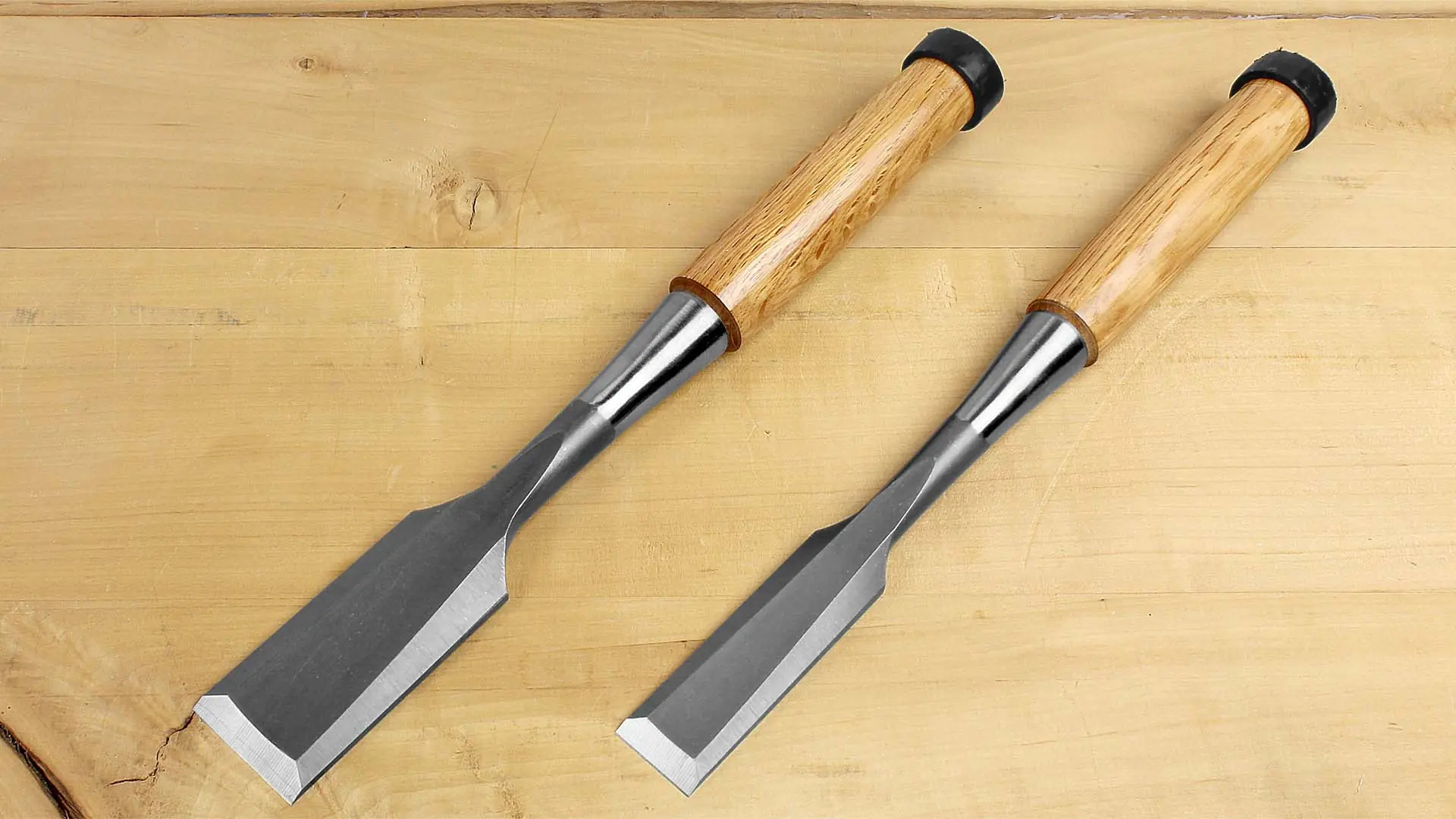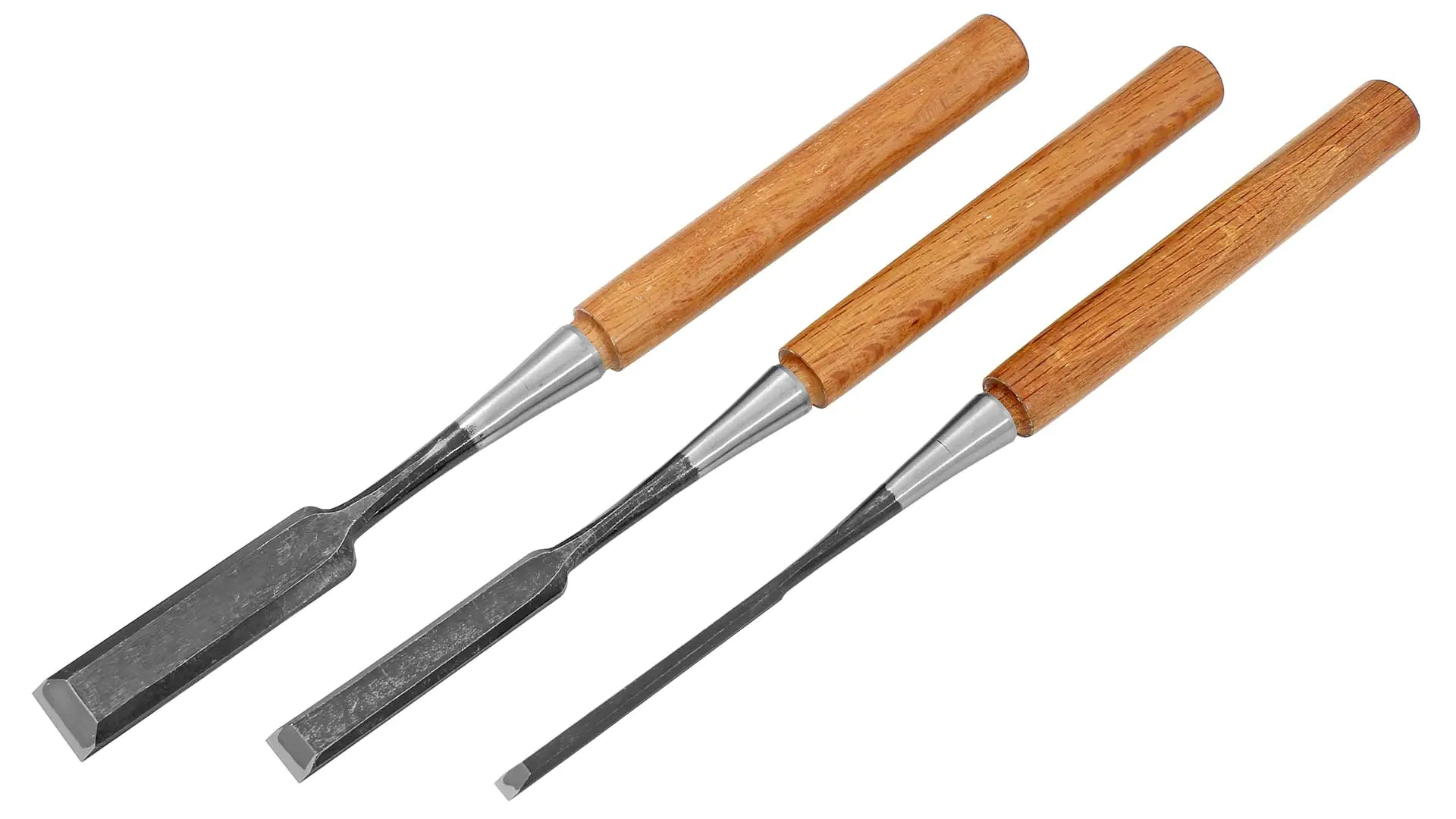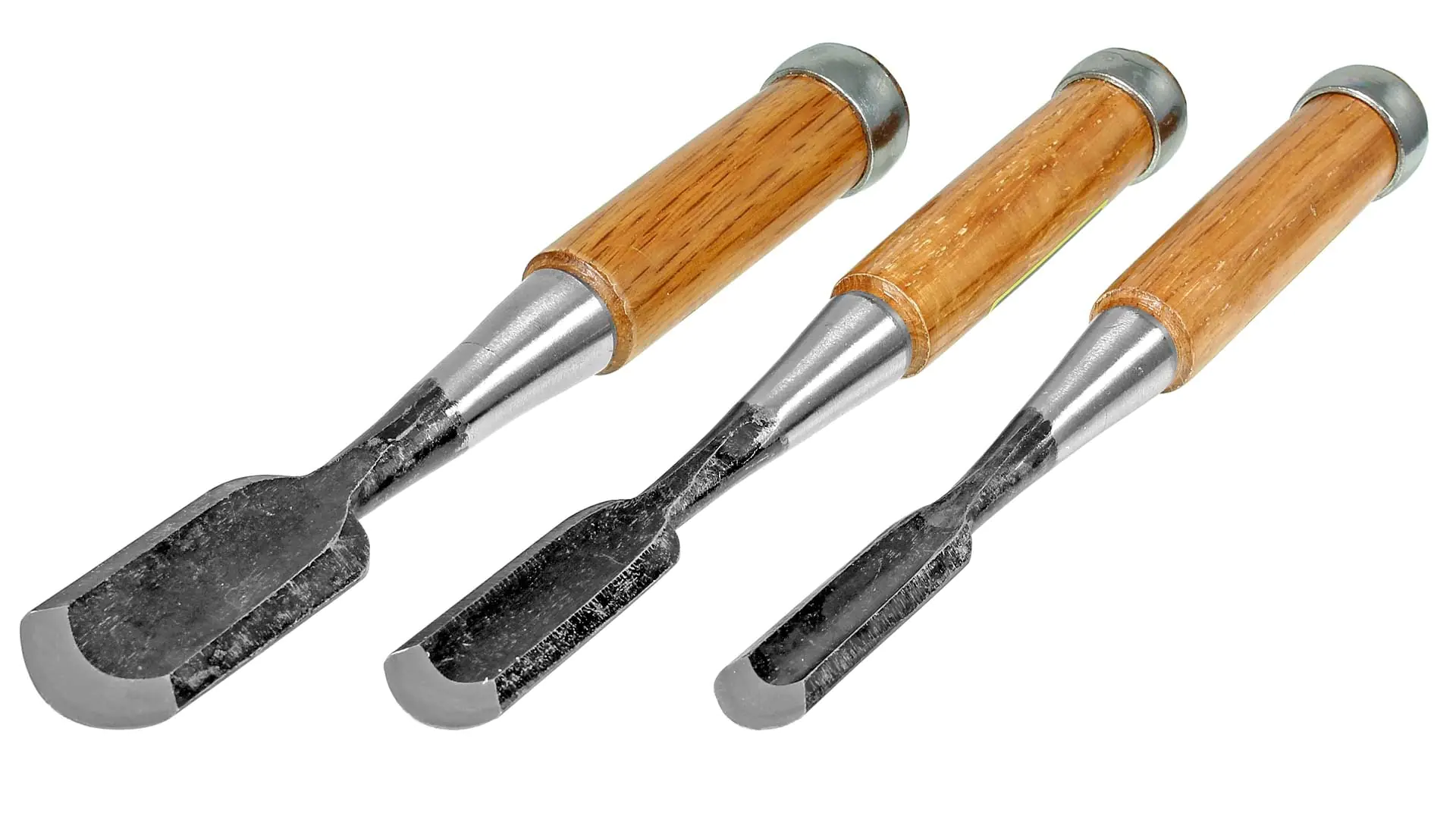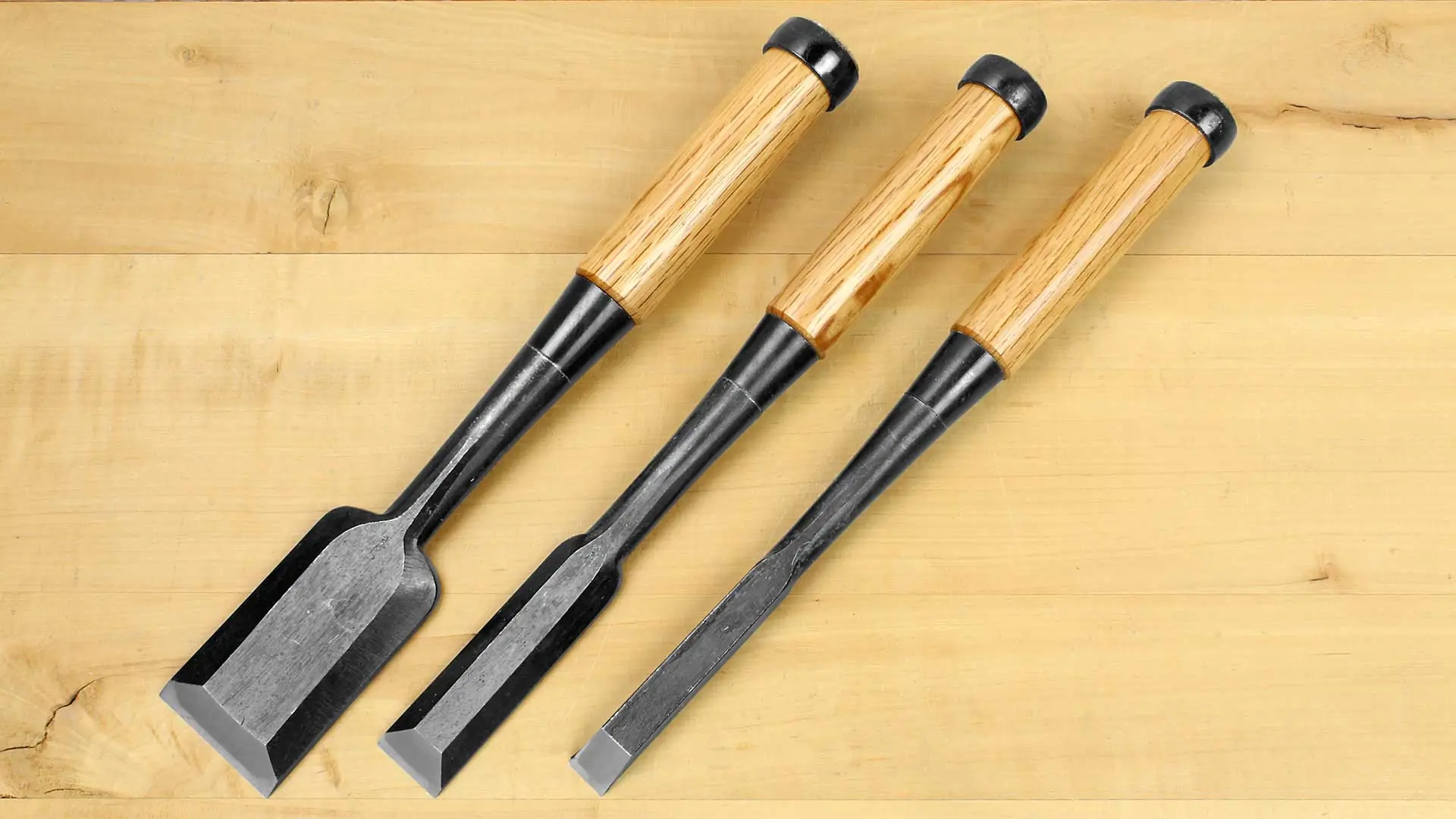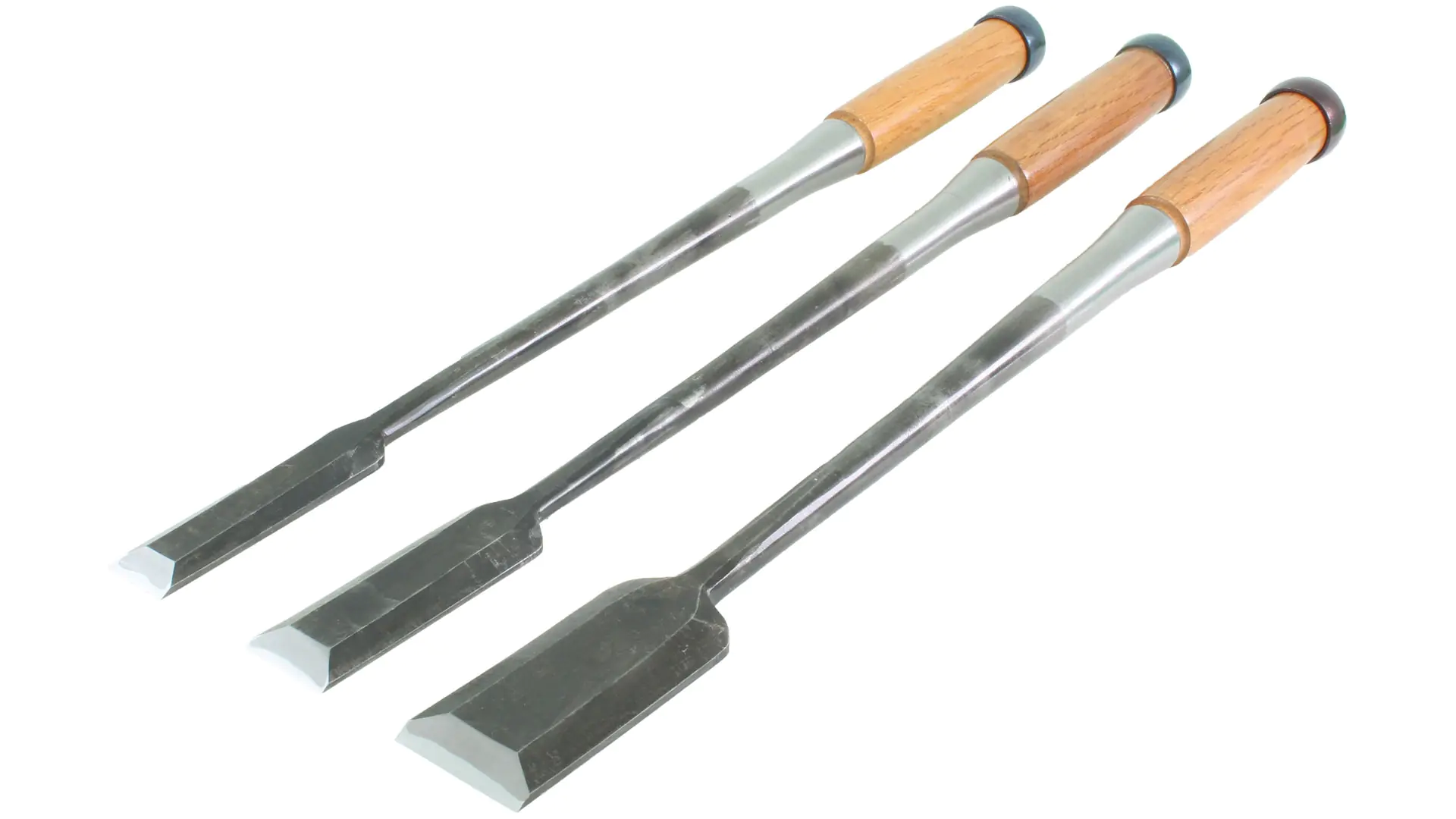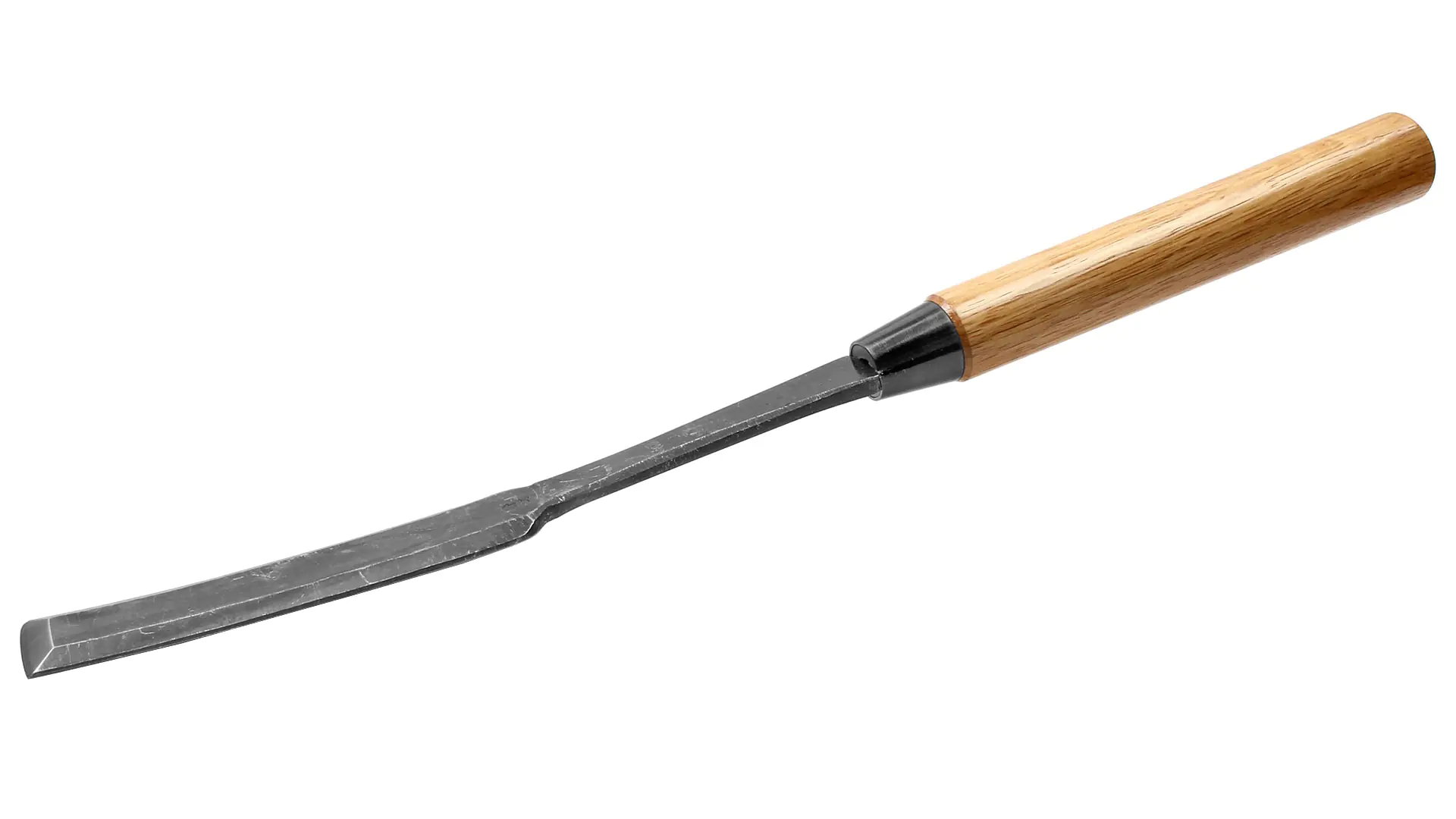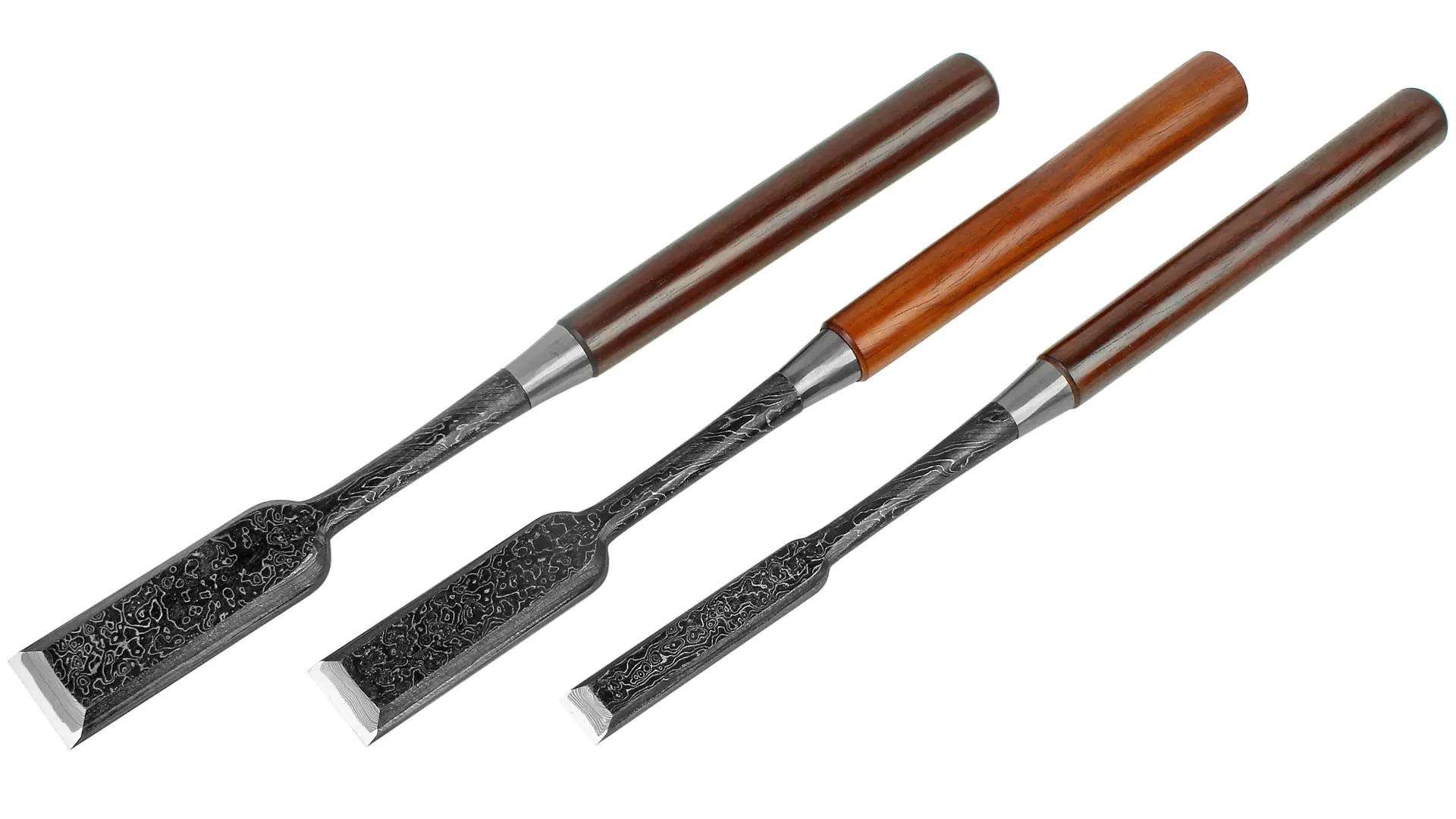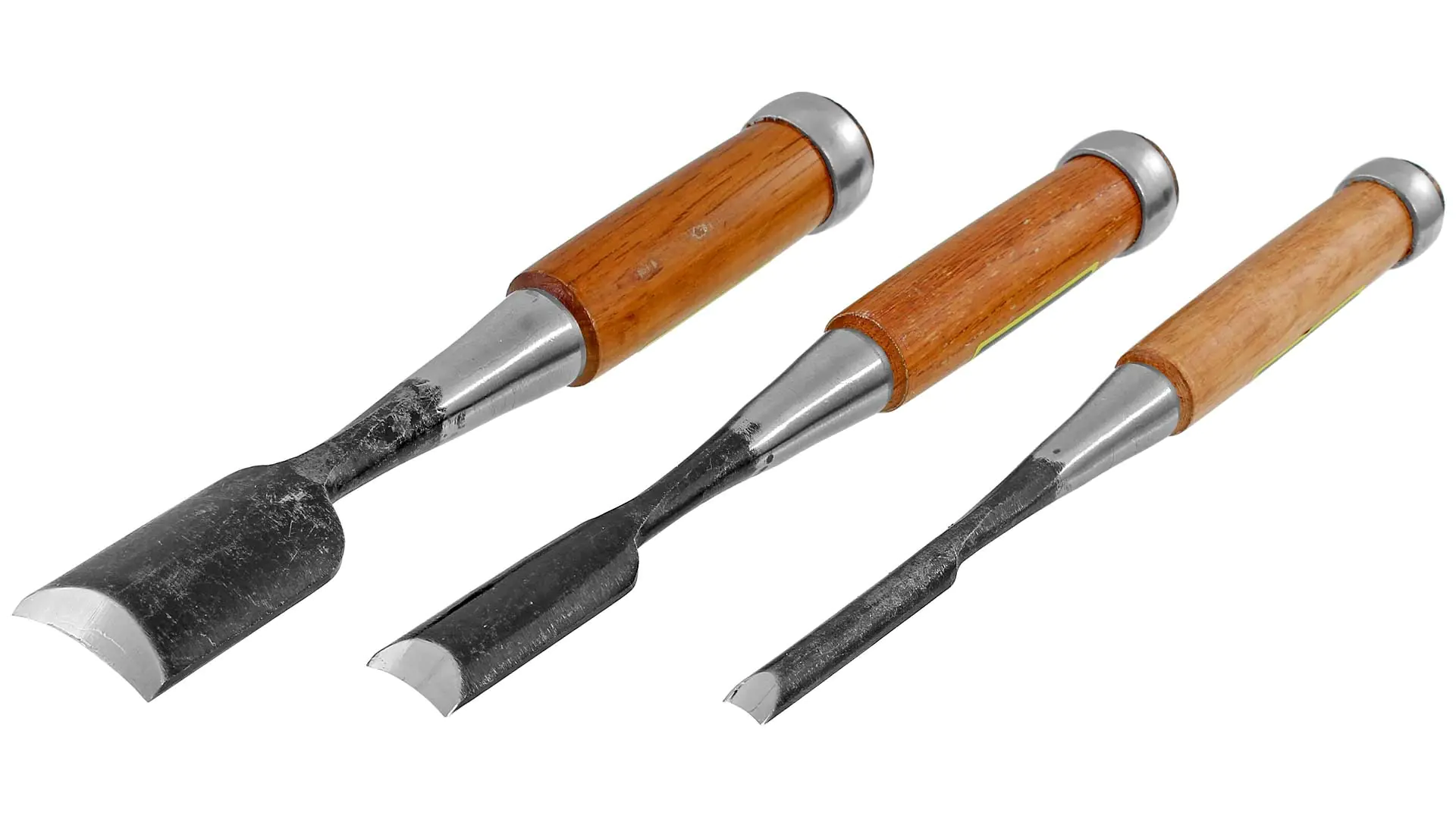-
Tools
- Japanese saws
- Western saws
- Chisel
- Marking & Scribing
- Planes
- Sculpting Tools
- Pliers
- Hammers & Mallets
- Axes, Hatchets & Adzes
- Crowbar, Pry Bar & Nail Puller
- Drawknife
- Assembly tools
- Woodturning Tools
- Clamps
- Fittings
- Safety knives, cutters
- Rasps
- Files
- Miscellaneous
- Promotion
- Drilling & Milling
- Machine Accessories
- Workshop
- Sharpening & Grinding
- Surfaces
- Measuring & Testing
- Household & Garden
Japanese Carpenter Chisels are essentially manufactured in the same way as Japanese chisels. A hard cutting steel is forge-welded with a softer iron backing. This method is traditional and allows for the use of the finest steels even in small, traditional forges, where most Japanese chisels are still made today. This small-scale structure is evident in the variety of forges producing different shapes and types. While some of these are known in the West, most are sold only in the Japanese market. The fact that some brands are known among Western woodworkers and others are not does not reflect on their quality. Generally, at similar price levels, you can expect a comparably high quality, although manufacturers more recognized in the West have slightly adapted their products to meet Western demands, such as pre-fitted ferrules and significantly reduced sharpening effort required by the user.
New to our program are the heavy carpenter’s chisels from the experienced blacksmith Yoshio Usui with his brand name „SHIGENOBU”. He works in Yoita, now a district of Nagaoka City in Niigata Prefecture. His robust Atsu Nomi are made from White Paper Steel. Like other Japanese chisels, these feature a hollow back, making honing on the whetstone significantly easier. By the way, the hollow grind gradually moves backward during honing, so you will never face losing your straight edge with normal use.
We would also like to draw attention to our carpenter’s chisels made from HSS steel. For a long time, no carpenter’s chisels were made from HSS steel because it wasn’t fine-grained enough to achieve really sharp edges—until a relatively fine-grained one was developed. You can get the HSS steel of these chisels very sharp, but their more outstanding feature is the robustness. With carbon steel, small parts of the edge can break off relatively quickly with poor handling, but this does not happen here. You can really get down to business with them without having to be overly cautious. The sharpening effort is slightly higher than with carbon steel.
Japanese Light Chisels (Usu Nomi, Kinari Nomi) are light chisels for finishing wood joints. They are only managed by hand or tapped lightly with the palm. Under no circumstances should these chisels be struck with a hammer or used for prying, as they would break immediately due to their thin forging.
Japanese light chisels are essentially manufactured in the same way as Japanese chisels. A hard cutting steel is forge-welded with a softer iron backing. This has tradition and allows for the use of the finest steels even in small, traditional forges, where most Japanese chisels are still made today. This small-scale structure is evident in the variety of forges producing different shapes and types. While some are known in the West, most sell only in the Japanese market. The fact that some brands are known among Western woodworkers and others are not does not reflect on their quality.
Like other Japanese chisels, these feature a hollow back, making honing on the whetstone significantly easier. By the way, the hollow grind gradually moves backward during honing, so you will never face losing your straight edge with normal use.
The Kinari Nomi by Tasai are somewhat larger and of exceptional craftsmanship. The „Mokume” pattern on the blade, the relief-like strong expression of the transitions to the next steel layer, is a specialty of Tasai and in its perfection unmatched by any other blacksmith.
Japanese Long Paring Chisels are called „Saya Nomi” and are very long, thinly forged chisels primarily used for slots in the scabbards of Japanese knives and swords. The edge is slightly rounded, cutting first in the center of the blade to allow for a gentle and delicate plunge into the wood. The back is slightly rounded across the width of the chisel and thus does not feature a hollow grind as is customary with Japanese chisels. The third subtle, barely perceptible rounding extends over the length of the chisel. The shaft is bent upward by about 12 – 13° to protect the knuckles. The chisel is forged from two layers and shows a hardness of about 63 – 65 HRC after tempering. Handle made from Japanese red oak. These chisels should generally only be driven into the wood with the palm, at most with light hammer taps. Made by the blacksmith Kawasei in Yoita, Niigata Province.
Available, delivery time: 1-3 businessdays within Germany
Available, delivery time: 1-3 businessdays within Germany
Available, delivery time: 1-3 businessdays within Germany
Available, delivery time: 1-3 businessdays within Germany
Available, delivery time: 1-3 businessdays within Germany
Available, delivery time: 1-3 businessdays within Germany
Available, delivery time: 1-3 businessdays within Germany
Available, delivery time: 1-3 businessdays within Germany

